If your succulent leaves turn brown or black, it can be because of improper watering and too much sun exposure. Fortunately, you can still salvage your succulent. Read on to learn why succulent leaves turn brown or black and how to restore your plant to good health.
- Black Leaves – Root Rot: Root rot, often caused by fungi in damp soil, leads to stunted growth and leaves turning from yellow to brown and black, starting at the base.
- Salvaging Techniques: To save a succulent, remove damaged roots and leaves, repot in suitable soil, and allow it to dry before gradual rewatering.
- Preventing Root Rot: Use pots with good drainage and appropriate potting mix to avoid water retention; water correctly to prevent overwatering.
- Brown Leaves Causes: Brown leaves can result from under-watering, resulting in crispy leaves, or sun damage, seen as brown patches on top leaves.
- Color Changes: Yellowing or red tips on leaves can indicate watering issues, insufficient sunlight, or nutrient deficiency. Red tips may also signify sun stress.
Why Is My Succulent Turning Black?
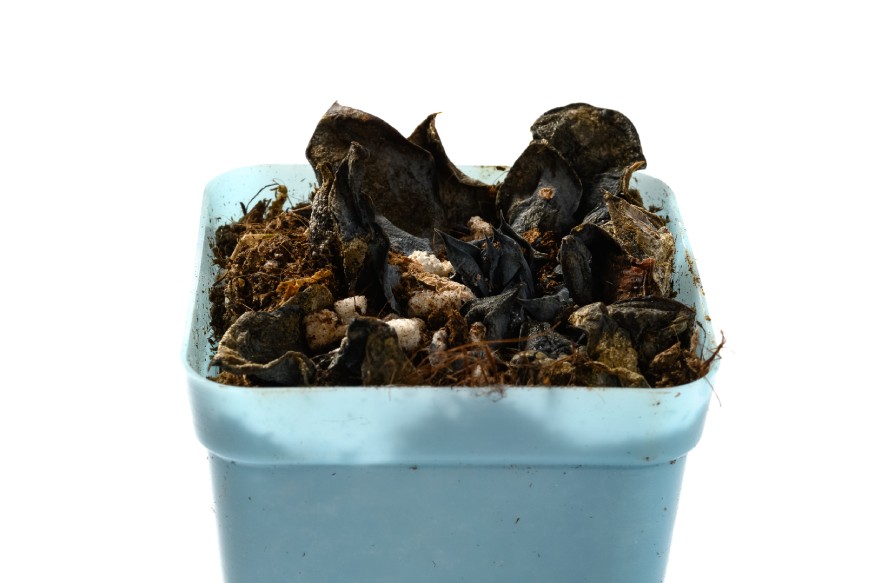
Blackening succulents is most likely a victim of root rot.
Most succulents evolved to grow in extremely rocky soil with little organic matter, often in locations where it rains hard but rarely. When a storm blows through, they quickly absorb as much water as possible, storing the water and nutrients in their fleshy leaves.
They then live on that water and nutrients until the next downpour. They are not adapted to constantly having damp roots like many houseplants.
How to Identify Root Rot
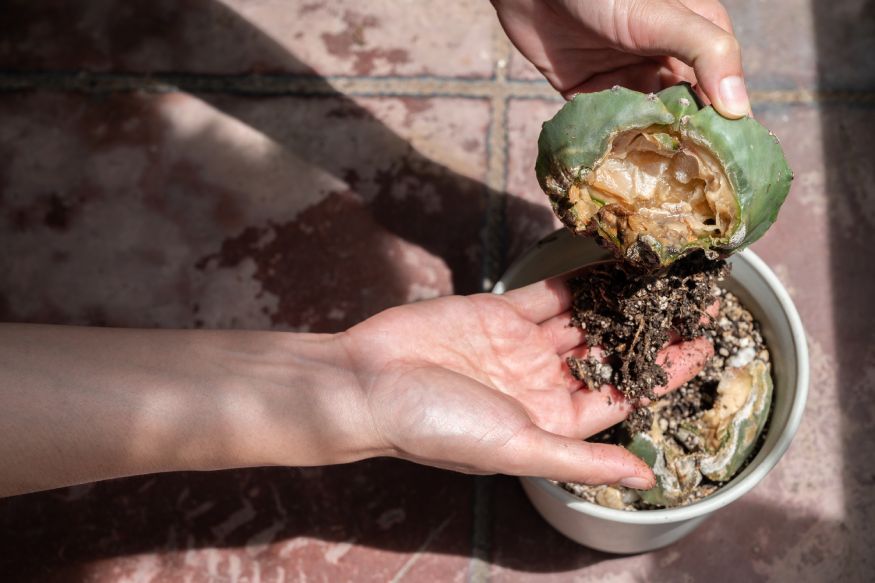
Root rot results from one of several types of fungi that can live dormant for long periods of time in soil, but is awakened by extended periods of dampness. Root rot causes a fairly predictable array of symptoms that culminate in the plant’s death, including:
- Stunted growth
- Limp leaves and stem
- Leaves turn yellow, brown, and ultimately black, typically starting with the leaves closest to the base of the plant
- Roots and soil develop a swampy, rotten-egg smell
- Soil remains wet longer than it should because the plant can’t absorb the water
- Digging up roots reveals that they are brown and mushy instead of firm and white(ish)
How to Save Succulents With Root Rot

If you want to try to save your plant is to remove the rot and let the plant’s remaining roots dry out.
- Carefully remove your plant from the pot and gently remove the bulk of the potting soil from the plant’s roots.
- Sterilize a sharp pruning knife or shears with rubbing alcohol. Make sure to clean the knife with alcohol both before and after using it on each plant to avoid spreading disease from one plant to another. Alternatively, you can use a soapy water solution.
- Use the knife to cut off any damaged roots, as well as any leaves that appear too discolored and soft to be rehabilitated.
- Repot your pruned succulent using an appropriate pot and soil. If the plant is too limp to stand upright, lay it down on top of the dry or slightly moistened potting mix.
- Moisten the soil using a misting bottle. Do not water the soil like you normally would for a succulent. Instead, let the plant dry out for a week or so (depending on the season and how limp the plant has become).
- Let the plant dry out fully before watering it again.
Note: If your succulent’s root rot has gone too far for you to save the whole plant, you may still be able to salvage enough to propagate it. Try taking a stem cutting or leaf cutting from the healthiest end of the plant, and use our propagation guide to try to grow your cutting into a new healthy succulent.
How to Prevent Root Rot
When it comes to root rot, a pinch of prevention and learning how to care of succulents are worth a pound of cure. It isn’t easy to fix, but easy to avoid. There are three essential steps to preventing root rot:
- Use an appropriate pot
- Use appropriate potting soil
- Water correctly
Use An Appropriate Pot
Using the right kind of pot with a large drainage hole will prevent excess water from accumulating in the bottom of the pot. Ideally, you should opt for an unglazed ceramic pot because it absorbs excess water from the soil, protecting your succulent roots.
You’ll want a pot with a saucer underneath to catch any water or soil that comes out, but make sure you don’t ever leave excess water in the saucer. Always dump out any water that accumulates thereafter watering.
Note: Make sure to use a pot that is the correct size, as a pot that is too large may hold water for too long, encouraging root rot.
Use Appropriate Potting Mix
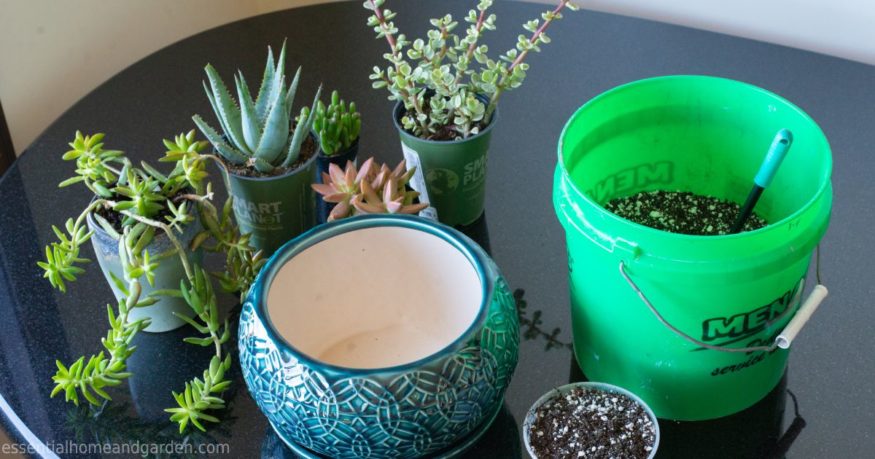
If you’re using a pot with a drainage hole and not watering too frequently, and you still get root rot, you’re probably growing your plant in soil that is too rich.
Note: The more organic matter in your potting mix, the more water it will absorb, and the longer your succulent’s roots will stay wet each time you water.
We recommend that you always repot your indoor succulents into homemade potting mix. Our potting mix recipes differ from typical commercially available potting mixes because they use large proportions of coarse sand and perlite or pumice.
Outdoors, you can add sand and gravel to soil high in clay or organic matter. These will both help with drainage.
Water Your Plant Correctly
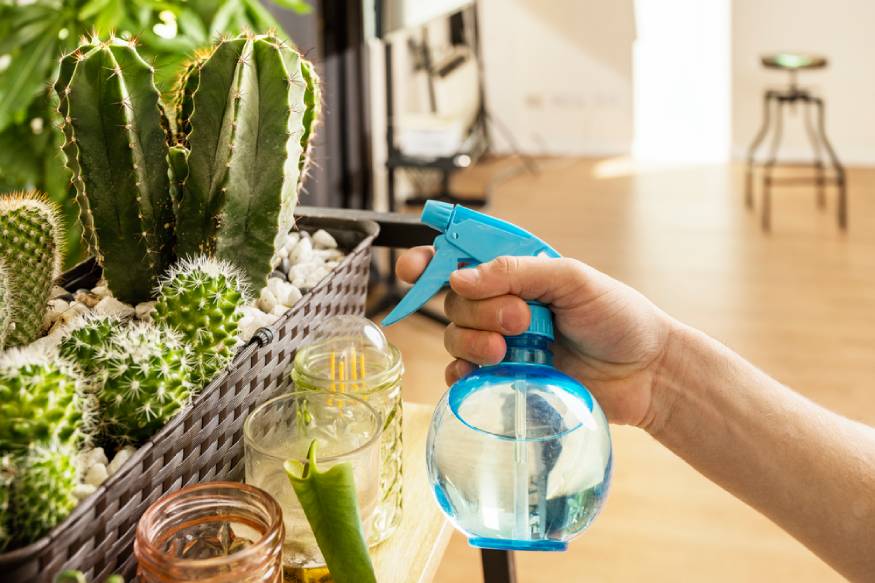
Assuming the environmental conditions are good (in terms of sunlight, temperature, pot, and soil) root rot may develop when you water your succulents too often. Typically this happens when you water your succulents at the same time as and using the same method as you use for their other houseplants.
There are two methods we recommend for watering succulents, both of which require you to grow the succulent in a pot with a drainage hole. These are the “Soak and Dry” method and the “Dunk and Soak” method. For either method, you start by checking the soil using your fingers to make sure that at least the top couple of inches of soil in the pot are dry before rewatering.
Why Is My Succulent Turning Brown?
Unfortunately, brown leaves are not a great clue on their own because there are so many potential problems that can cause your succulent’s leaves to turn brown. However, if you get a little more specific about what is happening to the leaves, they can be the best clue to what is ailing your plant.
Root Rot
When succulent leaves turn yellowish brown and become soggy, they are likely on their way to turning black due to root rot. Other symptoms of root rot include a limp stem and sulfurous smell. This typically affects the leaves closest to the roots quickly and severely, but the whole plant will be affected to some extent. Often a plant that has gotten to this stage cannot be rehabilitated.
Under-watering
Brown leaves are also a sign that your plant is going through dehydration. The leaves are flat, brown, and crispy and typically affect leaves closest to the roots first.
Unlike root rot, a succulent can easily survive the loss of a few leaves due to under-watering. As long as you resume an appropriate watering schedule, the remaining leaves and plant should revive.
You can pinch off the dead leaves (or leave them if you don’t mind them aesthetically). If you have to prune a bunch of dead leaves from the bottom of your plant, you can always top the plant and use our propagation guide to start over.
Sun Damage
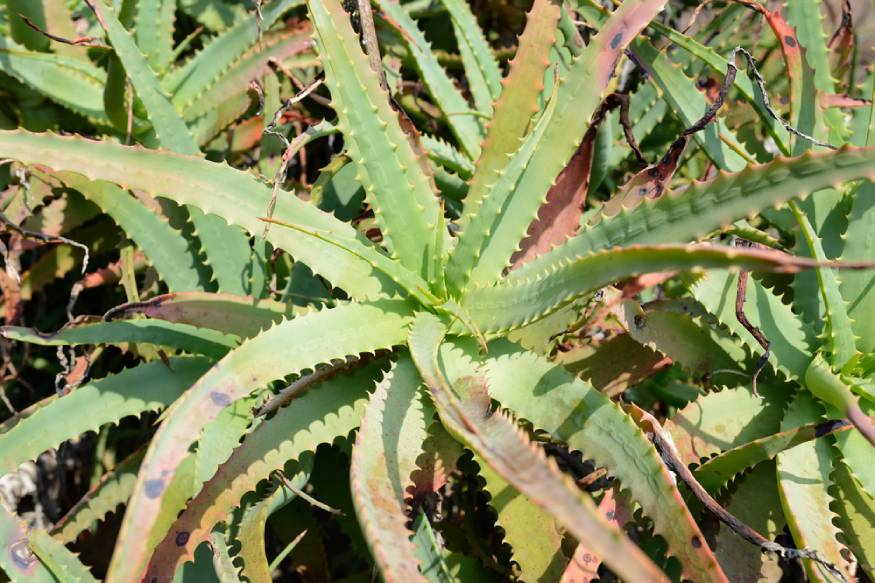
If the leaves turn brown, your succulent could get too much sun. You can distinguish sunburn or damage from other problems because it does not affect the whole leaf. You will find the brown patches on the top leaves of the plant (the ones exposed to the most direct sunlight) and not on the lower leaves that are shaded.
The key to avoiding sunburn is a gradual transition. If you notice sunburn beginning to form, move your plant to an area with slightly less direct afternoon sunlight, and increase their exposure by a little bit each day until you find a good balance.
Scars
Plants aren’t all that different from humans, even in the context of cosmetic damage. Sometimes a succulent heals from leaf damage such as a cut, puncture, or scratch without visible scarring. Other times, physical trauma to the leaf makes the plant grow a permanent brownish scab to seal off the raw, damaged area.
You can simply ignore the scar or prune off the damaged leaf if you prefer the plant’s appearance that way. The good news is that a leaf with a little damage can still be propagated.
Why Is My Succulent Turning Other Colors?
There are several reasons your succulent’s leaves might turn to a different color, each requiring a different strategy to solve it.
Watering Problems
Sometimes the problem is overwatering. Succulent leaves can turn yellow on the way to turning black, as a result of root rot. Strangely, under-watering can also cause leaves to grow pale and yellowish on the way to turning brown and crispy.
Insufficient Sunlight
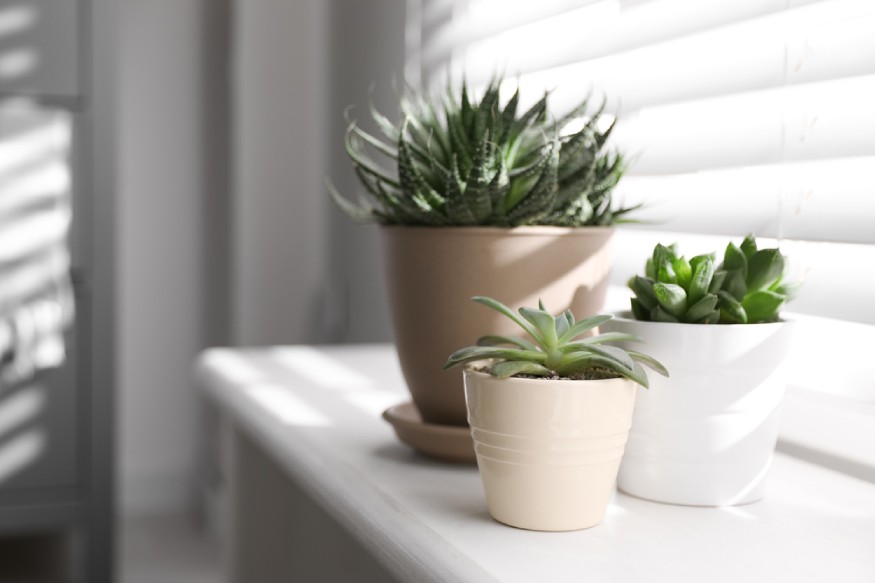
Another common cause of yellowing is that your succulent is not getting enough sunlight. Most succulents want as much sunlight as possible. A succulent growing in inadequate sunlight will become etiolated (pale and leggy). The only way to fix this yellowing is to give the plant more light, whether by moving it to an area with more sun exposure or by adding a sun lamp.
Insufficient Fertilizer
Succulents have very low nutrient needs because they evolved to grow in a substrate that is mostly rock. That means they don’t need much fertilizer, especially if you repot them every two to three years. However, if you haven’t repotted your plant in a long time and you don’t fertilize, yellowing leaves may be a sign that your succulent is lacking an essential nutrient.
When you fertilize, use an organic liquid fertilizer specifically designed for succulents. For suggestions on fertilizer options and a guide to choosing the best one, check out our complete guide to fertilizing succulents.
Succulent Leaves Turning Red At The Tips

Good news! This particular type of leaf discoloration is not a problem.
Most succulents are happy to get as much sun as possible but can tolerate some shade. Even in a north-facing window, they will show slow but consistent growth and bear healthy green leaves. However, if you put those same succulents in direct summer sunlight all day, they may develop signs of mild sun-stress.
The tell-tale sign of sun-stress is that many succulents will develop an attractive coloration on their leaves, typically in shades of brick or wine red. For example, bear paw (Cotyledon tomentosa) develops what look like bloody little claws on the tips of its paw-like leaves when it gets an abundance of sunlight.
Note: If you start seeing hard brown patches, you’ve put too much stress on your plant. But as long as you transition your plant from medium to high levels of sun gradually, you should be able to enjoy the pretty red leaf coloration without a problem.
Other Problems Affecting Succulent Leaves
There are a variety of other issues that affect succulents’ leaf appearance. For example, scale and mealybugs can leave a shiny residue called honeydew on your plant’s leaves.
However, like the fungi that cause root rot, and other pests and diseases, all of these problems are most easily prevented, not treated. If you provide a good growing environment for your succulent and attend to its very basic needs, it will likely be healthy and resilient and will enrich your environment for years to come.

